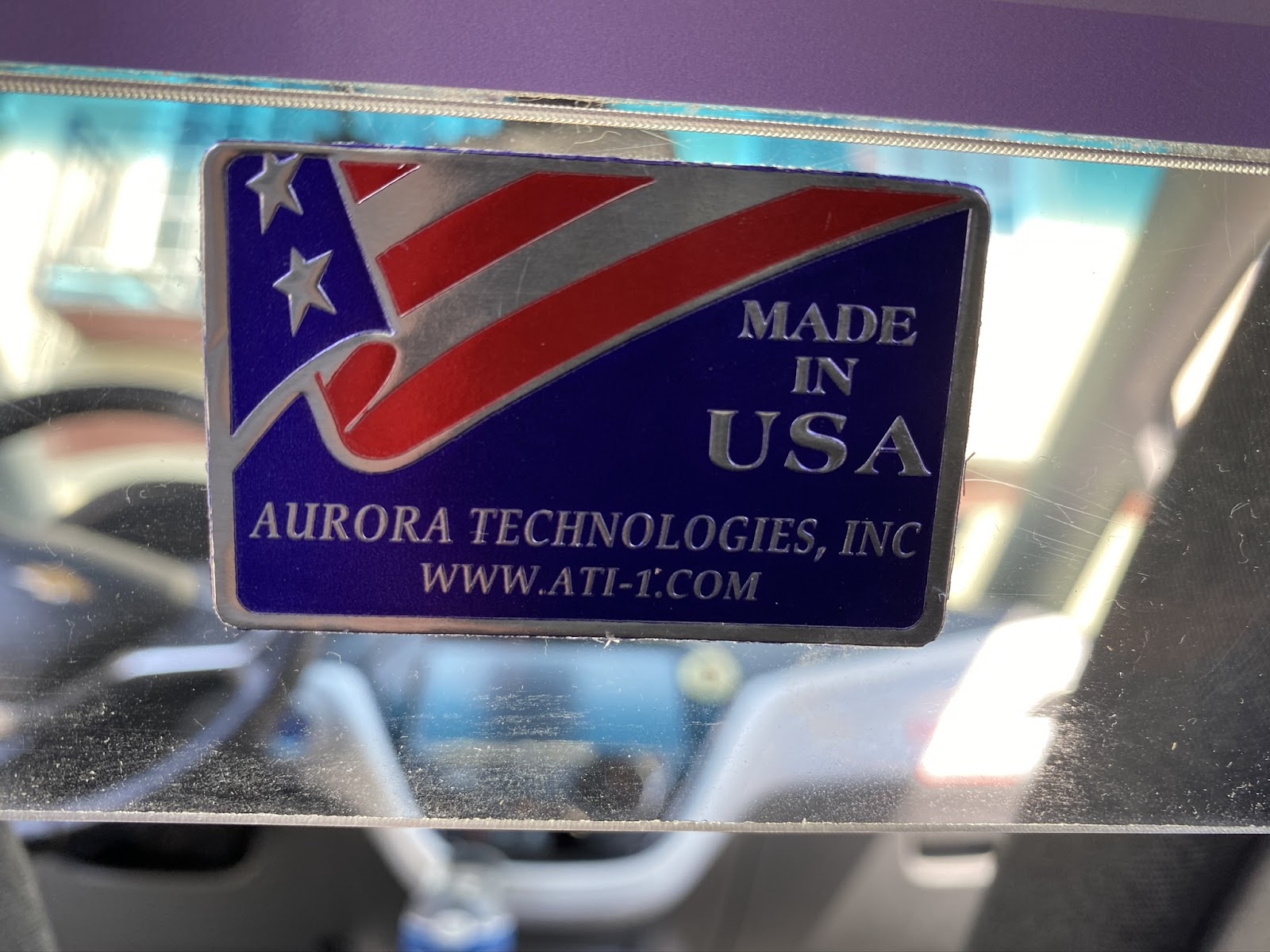Lyft has distributed over 60,000 vehicle partitions to drivers since July, but what are these partitions like to use? Do they protect drivers? Senior RSG contributor Gabe Ets-Hokin got ahold of one of these Lyft shields and shares how it works, and whether or not drivers should get one, below.
Cough! Cough! Cough!
As a driver, how many times have you heard that? I’m guessing I’ve heard it about 10,000 times, so many times I even keep lozenges in my car to offer especially consumptive types.
That all changed this year, didn’t it? I quit driving in March, but had I kept driving I probably would have panicked and thrown out my passenger as soon as I heard the slightest suggestion of a cough.
Lyft must have heard that from a lot of other drivers, because in July 2020, your big, cuddly pink friend in the rideshare business announced it would offer 60,000 partitions to its drivers at wholesale pricing.
But what kind of partitions? Are they good quality? Will they protect from transmission of viruses and germs, including COVID-19? How do you get one? All questions I had, and then Harry Campbell, the Rideshare Guy himself, asked me to test one of these barriers for our readers.
Quick summary:
- Some drivers have already received partitions
- You’ll be able to purchase partitions in your driver Lyft Store in the coming weeks
- The partition is well-built and well-designed, but should not be your only line of defense. Keep wearing masks and make your passengers do so as well.
The Lyft Driver Partition
The Lyft driver partition is a very nicely made and designed three-piece panel that adjusts to fit a wide array of passenger vehicles.

It’s made of thick Lexan and comes packed neatly in a reasonably sized box with everything you need to install it. It’s designed to provide a clear, but not airtight barrier between the driver and back-seat passengers.
Installing the Lyft Driver Shield
Installation is pretty simple, and you’ll need a Phillips screwdriver, a 5/16th-inch or 8mm wrench (socket or box, or a small adjustable one will probably work too) and a tape measure.
The instruction sheet tells you to lay the pieces out on a large, flat surface – don’t do what I did and put them on the garage floor. The dust and dirt will cling electrostatically to the partition material and scratch it up. If you don’t have a clean place to lay it out, like a kitchen table or workbench, put down a towel or blanket.
I wound up holding the pieces on my lap in the back seat and then eyeballing it until it was as wide as possible without hitting the sides of the car. 

Lyft wants you to leave at least two inches between the edge of the partition and the sides of the car. Next, you use the eight included screws, washers and bolts to firmly lock it into one solid piece. Finally, you use the included Velcro straps to secure it to your headrests – two vertical and two horizontal – where it seems to sit pretty solidly.
How Does the Lyft Partition Work?
Does it work? Lyft says unambiguously in the fine print at the bottom of the directions that the barrier “[D]oes not prevent the spread of bacterial pathogens or disease, including COVID-19.” So no, it doesn’t work to prevent the spread of disease. But does it do anything to hinder or make less likely the spread of COVID-19?

The answer is a solid and resounding “…maybe?” There isn’t a lot of research on transmission of the virus inside cars, and there’s even less on transmission in barrier-equipped cars. However, there is a lot written about its transmission in aerosols (that means a mist, like the breath from your nose or mouth), which is why six feet seems to be the magic number public-health authorities latch onto when it comes to social distancing.
You can’t stay that far away in most cars, though, can you? And even if you can, the hermetically sealed nature of modern cars means you’re re-breathing the same air every minute or two, and the cabin air filter in your car doesn’t filter out the itty-bitty droplets that the virus responsible for COVID-19 rides in. This is why the CDC wants you to roll your windows down 3 inches and switch off the “recirc” on the car’s climate controls.
Big water droplets, the say-it-don’t-spray-it kind, fall to the ground almost as soon as they leave your mouth or nose, according to an in-depth New York Times article from April. And it’s those big drops the partition can protect you from.
But those teeny COVID-mobiles, smaller than a red blood cell, can float on the breeze as far as 20 feet away, and it seems likely that these little fellas will drift over, under and around the Lyft partition like the baby spiders at the end of Charlotte’s Web.

Based on this knowledge, I’d have to tell people who are concerned about disease transmission that the Lyft partition and ones like it won’t have much more effect than both you and the passengers wearing masks and keeping the window cracked.
Lyft should really call this partition a “sneeze guard,” but hey – you can’t say it doesn’t help at all. It must have some effect, but how much – or if it’s worth the bother of having this thing in your car – is really hard to say. I’m just trying to get you the facts so you can make an informed decision.
Using the Lyft Partition
I dusted off my driving skills and hit the road for a few trips to gather some intel from passengers and it turns out, passengers really like these partitions. They don’t take up much passenger room and they keep the passenger from touching you or anything in the front of the car that you might touch.
It didn’t really block the sound of the passengers, either, so I was still able to talk freely and easily with them. The passengers I spoke with seemed to appreciate the fact that I put the barrier in there – they agreed the protection was mostly psychological, but they appreciated it nonetheless.
How to Get a Lyft Partition
Now you’re asking how you can get a hold of one of these. We received ours from Lyft as part of this review, but Lyft also explained drivers will be able to get one soon from the Lyft Store.
You’ll need to log in to the store as a driver, and over the coming weeks you’ll be able to place an order through there.
According to Business Insider, Lyft distributed the first 60,000 partitions to the ‘most active’ Lyft drivers, and the rest of the partitions will be available to purchase. Lyft has said they will not make a profit from the sale of the partitions , and shields will cost drivers $38 (including shipping).
Should You Get a Lyft Partition/Sneeze Guard/Shield?

If you can get one of these partitions and you want one (which is effective at keeping drunks/grabby hands/overfriendly people at bay, too) I’d say get this one (especially if you’re a full time driver!). It’s not going to keep viruses out, but it must have some effect, and it’s as well-built and designed as they come.
Like TSA searches at the airport, the main benefit of these partitions is signaling you’re aware of the dangers and risks and are doing everything you can to prevent them. I do not think this is a substitute to sanitizing your car, keeping the windows cracked and ensuring everyone in your car wears a decent face covering over their mouth and nose.
Drivers in New York City: Barrier by REEF is offering sanitization services for drivers, plus PPE. Check it out here!
Don’t drive if you don’t feel safe. We have other ways to make a buck if you don’t want to drive, but if you do choose to drive, get educated and don’t let passengers dictate your work conditions. Stay safe!
Are you currently driving with a shield, partition or sneeze guard? If so, which one are you using?
-Gabe @ RSG




